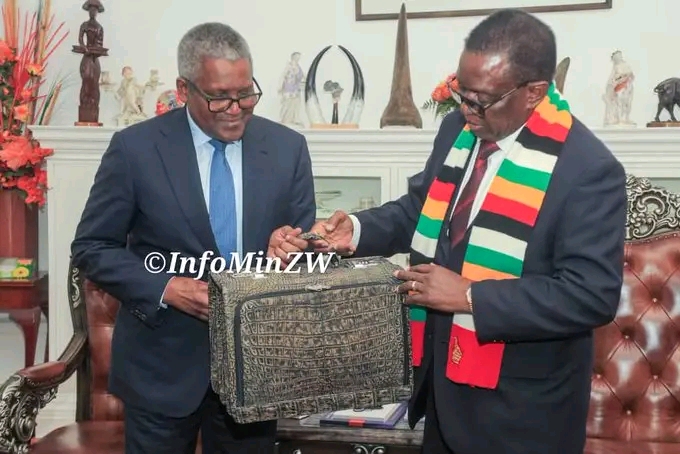By Dickson Bandera
The Southern African Development Community (SADC) has laid out a bold and coordinated plan to tackle regional energy shortages and build resilience in the water sector.
Addressing the Joint 43rd Meeting of Ministers Responsible for Energy and Water, SADC Deputy Executive Secretary for Regional Integration, Ms. Angele Makombo N’Tumba, delivered a powerful speech that blended progress, urgency, and a call to collective action.
She began by acknowledging the progress made since the 42nd Ministerial Meeting in Luanda, Angola, citing key achievements such as the commissioning of 2,885 megawatts of new power generation, the signing of updated energy protocols, and the launch of SADC’s first Sustainable Energy Week. However, despite these strides, N’Tumba painted a sobering picture of current challenges.
“As of May 2025, the region’s installed generation capacity reached 85,221 MW,” she said. “However, challenges persist, with a generation capacity shortfall of 792 MW for the entire region. When considering only those Member States whose utilities are interconnected through the Southern African Power Pool (SAPP), the shortfall rises significantly to 4,509 MW.”
The severity of the power deficit is compounded by uneven distribution. Angola, Mozambique, South Africa, and Tanzania have surplus electricity, but inadequate transmission infrastructure has blocked the flow of power to neighbouring states in need. “The full potential of this surplus is constrained by limited interconnections,” N’Tumba noted, stressing the urgency of accelerating infrastructure development.
To address this, SADC has committed to adding over 28,000 MW of generation capacity between 2025 and 2027. Projects such as the Tanzania-Zambia (TAZA) Interconnector and the Malawi-Mozambique Interconnector, scheduled for completion by the end of 2025, are expected to boost regional electricity trade and grid stability.
The meeting also shone a spotlight on the Regional Transmission Infrastructure Financing Facility (RTIFF), a dedicated mechanism to unlock capital for key energy projects.
“Delays in reaching financial closure for several projects underscore the urgent need to fully operationalise RTIFF,” N’Tumba emphasized. Mauritius has been confirmed as host of the facility, with legal and governance structures nearing completion.
A transformative leap came with the launch of the RETRADE-SA Programme in January 2025, backed by US$1.26 billion from the World Bank. Its goals are ambitious: a 25% increase in regional electricity trade, 2 GW of additional renewable capacity, and a reduction of 9 million tonnes of CO₂ emissions.
“This initiative marks a critical step toward realising the long-envisioned interconnection between the Southern and Eastern African power pools,” she added.
Turning to the regulatory landscape, N’Tumba announced progress in transforming the Regional Electricity Regulators Association (RERA) into the SADC Regional Energy Regulatory Authority (SARERA), a move expected to harmonise energy market rules and boost investor confidence. SADC is also working closely with the United Nations Economic Commission for Africa (UNECA) on a Just Energy Transition (JET) Framework tailored to the region’s socio-economic conditions.
While the energy agenda commanded attention, the water sector was not left behind. N’Tumba hailed the commissioning of the Kazungula Water Supply Project on 8 June 2025 as a concrete result of regional cooperation. Supported by the SADC Water Fund and the Project Preparation and Development Facility (PPDF), the initiative aims to bolster climate resilience and water security.
Progress was also noted in the alignment of River Basin Organisations (RBOs) with SADC’s Revised Protocol on Shared Watercourses. “This has yielded encouraging results in stakeholder engagement, data sharing, and joint water planning,” she said.
However, she warned that worsening climate conditions—characterised by more frequent floods and droughts—threaten to reverse these gains. “The increasing frequency and intensity of extreme climate events have exposed the vulnerability of our water infrastructure,” N’Tumba cautioned.
In a rousing conclusion, she called on SADC Member States to redouble their efforts and deliver tangible outcomes. “Between now and 2050, the SADC region must ensure that priority energy and water projects are implemented with speed to transform our region into one that is energy-secure, water-secure, and climate-resilient,” she declared.
Her multilingual closing—“Muinto Obrigada! Merci beaucoup! Asante Sana! Kea Leboga! Ta Tenda!”—was more than ceremonial. It was a cultural and political affirmation of unity in diversity, and a call to action echoing from Cape to Cairo.
The road to regional integration may be long and complex, but with deliberate planning and shared commitment, SADC appears determined to light the way—literally and figuratively—for generations to come.


